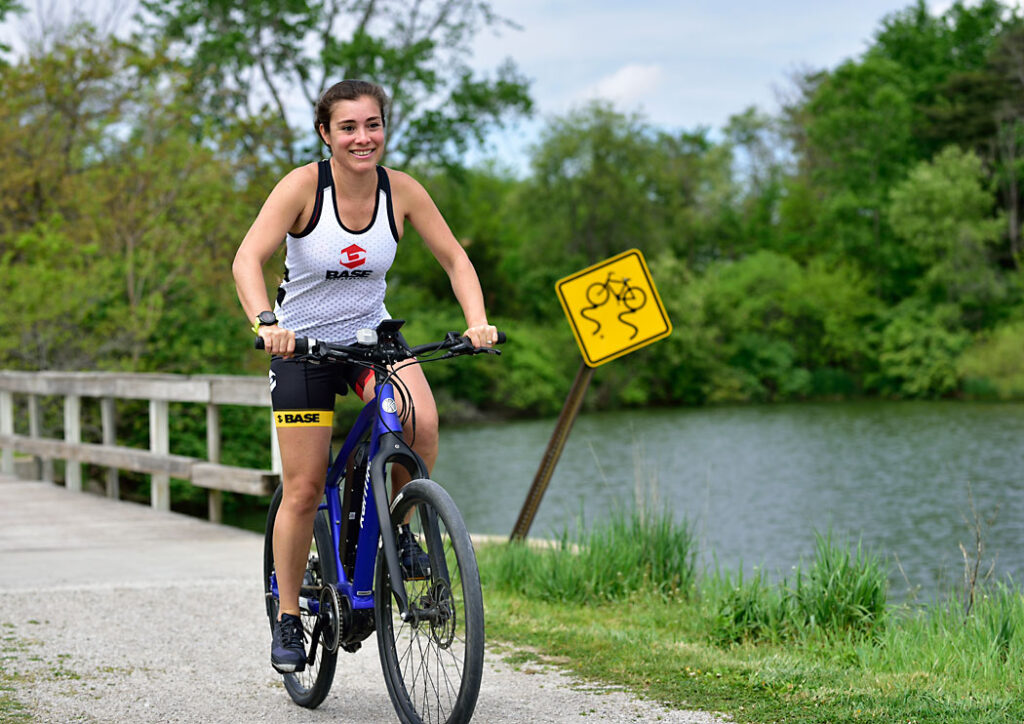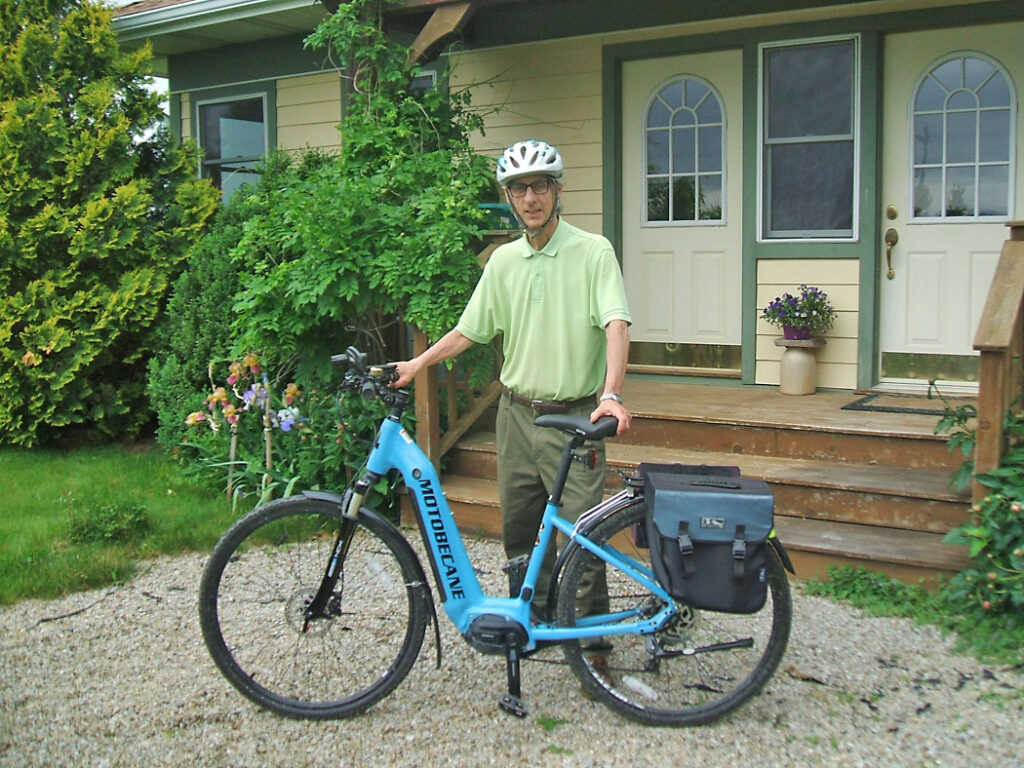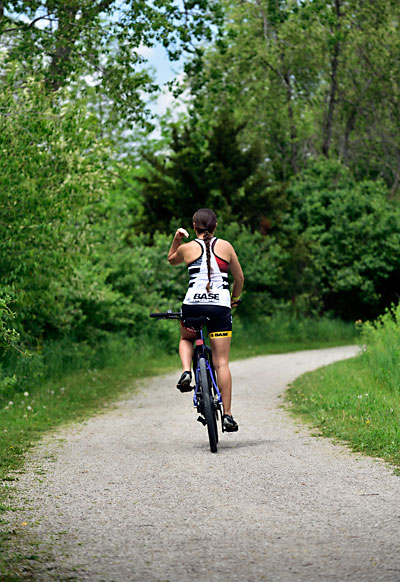
Are e-bikes just a temporary craze? Not likely. Since 2014, sales of e-bikes are up more than 800 percent. Worldwide, e-bikes have mushroomed into a $16 billion industry with a projected annual growth rate of 6 to 7 percent over the next 4 years. In terms of sales volume, they are still a small fraction of total bike sales, mostly due to their novelty and higher cost. But in the Netherlands and other countries known for their high percentage of bike commuters, e-bike sales have now surpassed traditional bike sales.
E-Bikes Defined
Okay, let’s stop right there—what exactly are e-bikes? They’re bicycles with built-in electric motors that draw energy from a rechargeable lithium-ion battery pack. By transportation law, e-bikes are not classified as a type of motor scooter or moped but as “human power/electric power” hybrids, similar to the way a Toyota Prius is an electric motor/gas engine hybrid.
An e-bike is a hybrid between your leg power and the electric motor that can boost your power output by 25, 50, or even 100 percent at a push of a button. One hundred percent leg power may be desirable if you 1) want more vigorous exercise, 2) are traveling down a long, steep hill, 3) are sailing along with a strong tailwind, or 4) are short on battery charge and want to make it home before the juice runs out.
The two key components for this human-electric hybrid are essentially the lithium-ion battery pack and the electric motor. Also included is a motor controller switch located on the handlebars that allows you to adjust the power. A computer display, which also sits on the handlebars, provides all sorts of data like trip distance, speed, battery charge level, and level of motor output.

E-bikes are legally classified as bicycles, since manufacturers must by law limit motor assist’s top speed to either 20 mph or 28 mph, depending on the class of e-bike. Class 1 e-bikes are pedal assist only (meaning you need to be pedaling for the motor to run) and can go up to 20 mph. Class 2 e-bikes also have a top speed of 20 mph but are throttle assisted. Class 3 bikes are pedal assist only, with a maximum speed of 28 mph.
As you can probably guess, the battery and motor make e-bikes heavier than regular bikes, by at least 20 pounds. There’s also extra weight from the beefier frame, sturdier wheels, wider and more rugged tires, and hydraulic disk brakes for superior stopping in dry or wet conditions. This weight penalty is not a big disadvantage, however, given that their powerful electric motors can range from 250 to 500 watts or higher.
Types of Motors
There are two types of electric motors on the market. The most popular is the hub motor, which is an integrated part of the rear wheel hub. It is generally found on less expensive e-bikes. These motors, which use cadence sensors, are durable and reliable, and give good acceleration from a stop.
The second type is the mid-drive motor, which is located down at the bottom bracket, integrated with the crank arms. A mid-drive motor gives the rider a more natural ride than a hub motor, making the rider feel like they have the legs of a strong, athletic cyclist. Mid-drive motors use built-in torque sensors to make it easier to climb hills. Bikes with mid-drive motors, including both commuter and mountain bikes, are usually priced at a higher cost, roughly above $2,500.
Commuter-style e-bikes put the rider in a more upright position, with additional comfort in the saddle. Mountain e-bikes are also becoming increasingly popular, as even the most avid mountain cyclists love its advantages on hill climbing.
E-bikes, especially those with mid-drive motors, have a lower center of gravity, so they handle and corner quite well. I often need to carry heavier items like groceries in my pannier and basket. Many higher quality e-bikes come standard with a strong rear rack and fenders, as well as integrated lights, bell, and other accessories for the serious commuter.
Is It Cheating?
Some lesser-informed folks may view these new e-bikes as a lazyman’s way to pedal around town—or even call it “cheating,” as some bike club roadies have proclaimed. But fret not: e-bikes aren’t here to rob us of our human-powered way of life. In fact, they may very well enhance our lives by giving us more incentive to get out and exercise.
Many who are new to bicycling are now avid e-bikers, as the electric components are meant to boost human power, not completely replace it. It makes obstacles like hills and headwinds more manageable and allows you to travel farther without getting as tired or sweaty—and, believe me, this is a big deal among serious urban commuters. E-bike commuters often travel to their urban workplaces from the suburbs, where the long distance—not to mention the sweat of powering a traditional bike—would be impractical. That’s why more and more people are attracted to them—they can go longer distances with less effort at relatively higher speeds, without the need for registration or insurance.
I bought my first e-bike last winter after selling our second car. Now I enjoy the advantages of zipping around town and campus more quickly. When I have a headwind, I’m climbing a hill, or I’m running late, I’m able to boost the motor’s power output at will. A traditional bike would have me feeling more tired during hurried times or when I have no desire to exercise, like at the end of a workday.
How Long Between Charges?

One of the most common questions I’m asked about my e-bike is how long the battery lasts on a single charge. It’s a tough question to answer, because it depends on so many factors. Battery capacity usually varies from model to model—400 to 600 watt hours is common. But you also have to take into account the weight and overall fitness of the rider, how hilly the terrain is, the outside temperature, and how often you pedal in the higher levels of assist.
In my personal experience e-biking around town, I average about 75 miles to a charge. Given that I commute 40 to 50 miles a week, I hardly need to charge up the battery but once a week, and it takes only three hours to fully charge from a standard 120V household outlet.
Revolutionary Advantages
According to a recent National Household Travel Survey, 50 percent of all car trips in the U.S. are just 3 miles or less. As an e-bike owner, you have the ability to travel longer distances, tackle bigger hills, save money on gas and other auto costs, and have a speedier, sweat-free commute. The growing popularity of the innovative e-bike is helping to revolutionize the way we travel into a more sustainable, healthy and eco-friendly world.
Happy e-biking!
Join Other Riders
A note from the author: For those who own e-bikes and would like to ride with an organized group, you are welcome to ride with the Fairfield Bike Club. We ride on Saturday or Sunday mornings, depending on the weather, and meet at the Fairfield Arts & Convention Center, 200 N. Main St., Fairfield. Contact John Salerno, johnwsalerno@gmail.com for the weekly ride schedule.
